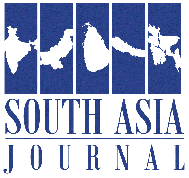
SAIRA BANO
The trajectory of India-US relations is on the upswing. The first Trump administration further strengthened the strategic partnership with India, taking significant steps to enhance bilateral defence and security cooperation. One notable move was the renaming of the US Pacific Command (PACOM) to the Indo-Pacific Command (INDOPACOM), underscoring India’s growing strategic role in the region. The administration also approved the sale of Sea Guardian drones to India, making it the first non-NATO country to acquire these advanced systems – a landmark development in defence ties. Additionally, India was granted Strategic Trade Authorization Tier-1 (STA-1) status, allowing access to license-free military and dual-use technologies, a privilege extended to only a select group of US partners.
But there have been jolts to the relationship. India remains reliant on Russian defence equipment (around 36 per cent of its total arms imports) and this has rankled some in Washington. Following the Russian invasion of Ukraine, India took advantage of Western sanctions to increase its imports of Russian oil. And legal cases over an alleged assassination plot in New York involving an Indian intelligence officer as well as US Department of Justice filings against Indian conglomerate Adani have complicated ties.
Now, with Donald Trump back in the White House, Indian Prime Minister Narendra Modi will visit the United States from 12-13 February in a bid to strengthen alignment with Washington while carefully maintaining a balance to avoid overreliance.
India is in a relatively stronger position in managing its relationship with the second Trump administration.
Modi will be the third foreign leader to visit the United States after Israel’s Prime Minister Benjamin Netanyahu and Japan’s Prime Minister Shigeru Ishiba. Countering China is likely to remain a cornerstone of the strategic partnership. In his first call to Modi, Trump underscored the importance of India increasing its procurement of US-made security equipment.
And while total defence trade rose from near zero in 2008 to more than $20 billion by 2020, the Trump administration is expected to push for increased Indian purchases of US-made materiel. How this intersects with wider trade relations will be fascinating, given Trump’s willingness to wave tariff threats. During his election campaign, Trump referred to India as a “big abuser” of trade ties, highlighting concerns over the trade deficit, which stands at $45.7 billion. His “America First” policy is likely to clash with Modi’s “Make in India” initiative, as both leaders pursue protectionist economic strategies. Trump is expected to reintroduce tariffs, as he did during his first term, in an attempt to reduce the trade imbalance.
Illegal immigration is also likely to be a contentious issue between India and the United States. Recently, the United States deported 104 Indian nationals, sparking domestic protests in India. In 2022, an estimated 725,000 Indian nationals were residing in the United States without legal status. Given Trump’s transactional approach to diplomacy, India may need to make concessions on trade and immigration to prevent these issues from straining bilateral relations.
India remains firmly committed to its policy of strategic autonomy, often described as “Non-Alignment 2.0”. This approach allows India to strengthen partnerships with key global players, including the United States, Russia, and China, while avoiding excessive dependence on any single power. Despite ongoing border tensions with China, India has managed to maintain a degree of stability in its bilateral relations.
Although the Doklam standoff in 2017 and the Galwan Valley clash in June 2020 severely strained diplomatic ties as the deadliest confrontations along the Line of Actual Control since 1975, this did not significantly impact trade relations. In October 2024, both countries reached an agreement to disengage their military forces along the disputed border, aiming to restore pre-2020 patrolling positions and ease tensions.
India prioritises flexible and dynamic coalitions over rigid alliances, ensuring that its partnerships align with its national interests. This commitment to strategic autonomy explains why, despite significant shared interests and values, India has not entered into a treaty-based strategic alliance with the United States, unlike Washington’s formal alliances with other partners. Instead, India engages in a selective partnership with the United States, primarily to address shared concerns over China’s rise. Unlike NATO and other US security allies, India does not rely on the United States for its defence, making it less susceptible to Trump’s demands.
So India is in a relatively stronger position in managing its relationship with the second Trump administration. India may make selective concessions on trade and immigration to prevent tensions from derailing bilateral ties. At the same time, it will continue to diversify partnerships with other major powers to avoid excessive dependence on the United States.
source : lowyinstitute
